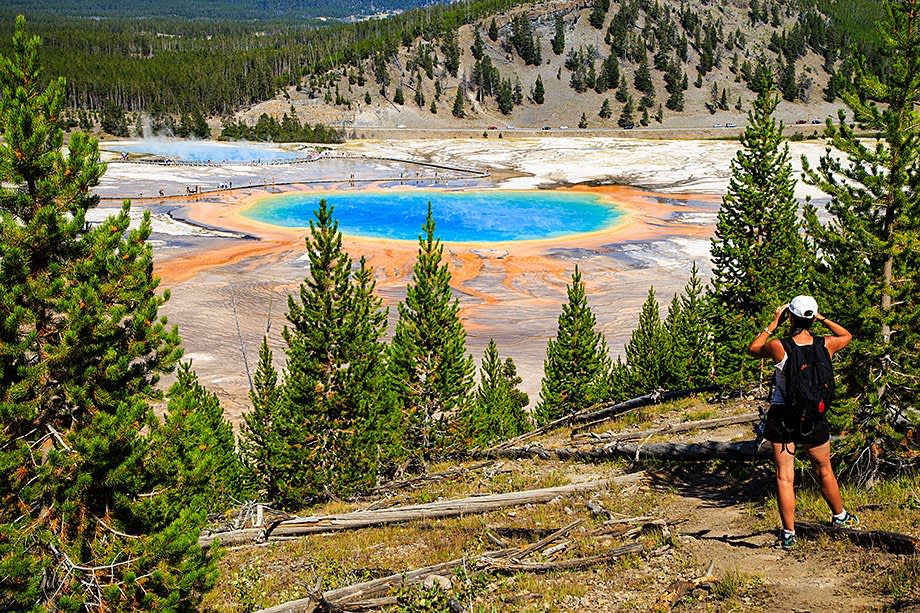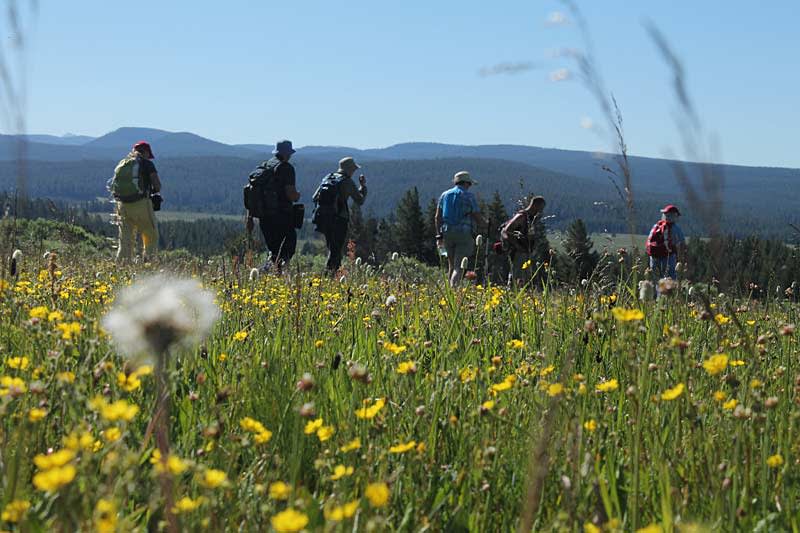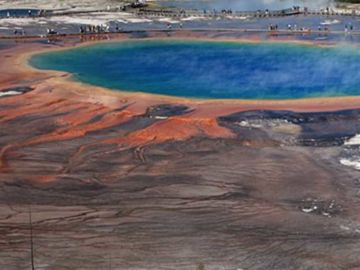
Yellowstone Wildlife Trek
Read time – 2 minutes
The mist filled the hill-folds like honeyed candy-floss, its ethereal softness tinged golden by the rising sun. It wasn’t even 6 am and our van was, it seemed, the only vehicle on Yellowstone’s Grand Loop Road.
The only vehicle, yes – but not the only thing. “Bison!”
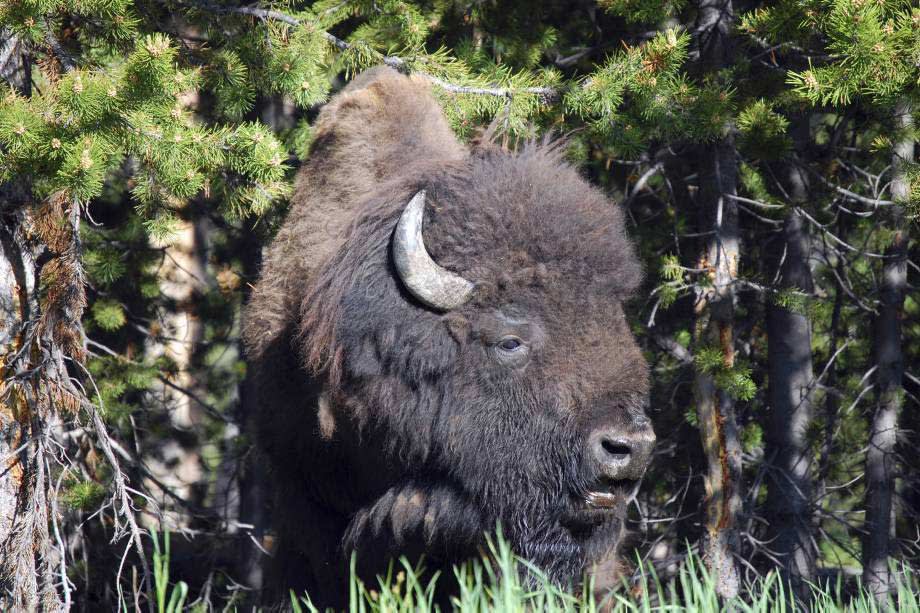 A huge male bison
A huge male bison Yellowstone Wildlife
Our small group yelled in urgent unison. We may have been bleary at this unsociable hour, but we’d all clocked the shaggy-headed beast – solid as a small car – that had just materialised from the fog and was now standing mid-tarmac, right in our path.
The driver slammed on the brakes. We all pitched forward, hearts in mouths, as the van halted, just in time. The bison didn’t flinch.
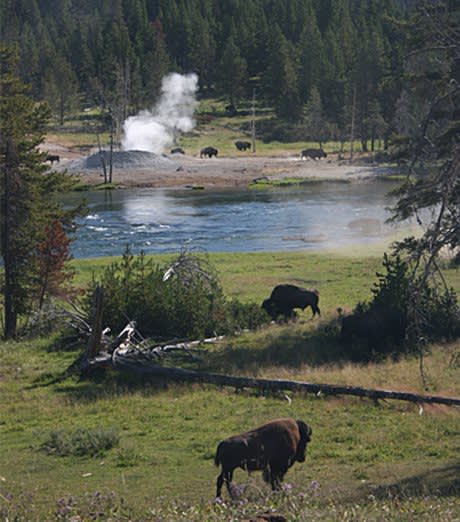 Bison grazing peacefully
Bison grazing peacefully Bison are just one of the potential hazards of Yellowstone – one of the USA’s most popular, and the world’s oldest, national park. Others include effervescing geysers, belching mud-pots, loping bears and – worst – other people.
Visit Yellowstone in summer and it’s undeniably busy. But, actually, only 1% of visitors here venture more than a mile from the road. Use your feet, lose the crowds.
Which was what we intended to do. Having survived the bison head-on, we continued (carefully) to make our rendezvous with MacNeil Lyons – the expert guide who was going to lead us into the wildlife heartland of Yellowstone, and get us away from most of the people.
Lamar Valley
The Lamar Valley, in the north-east of the park, was an American Serengeti. Bison browsed on the plains; pronghorn antelope flounced up the slopes; a bald eagle supervised proceedings atop a cottonwood tree.
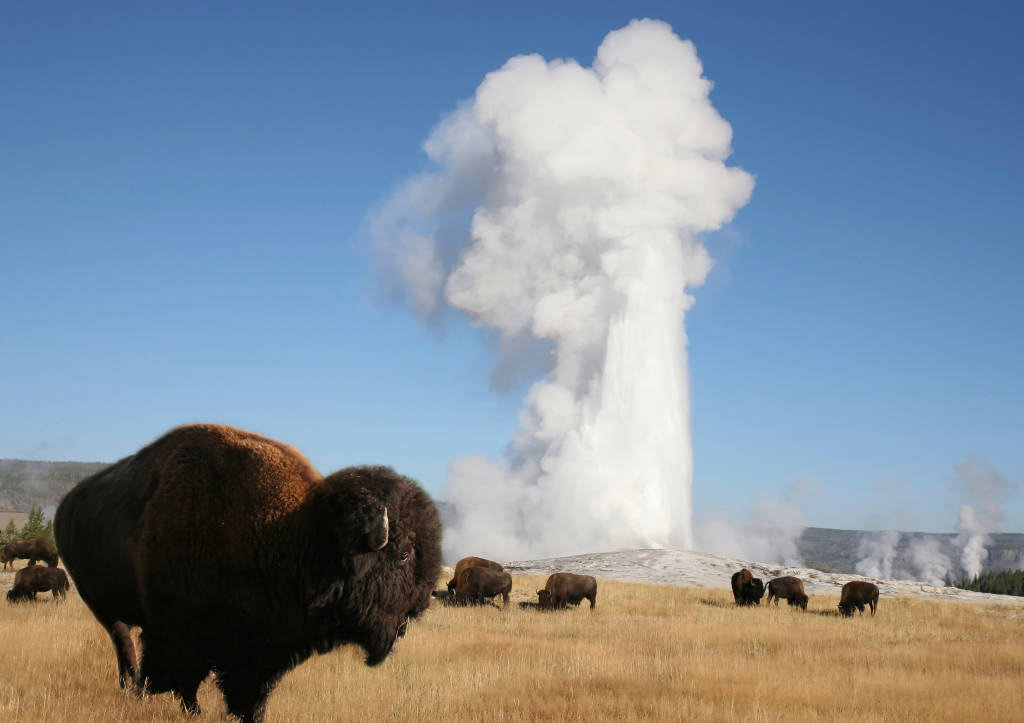 Bison in front of Old Faithful
Bison in front of Old Faithful But, lovely as they all were (not least the beaver that toddled out of the river’s ripples), our spotting scopes were trained on one hillside. Amid its speckle of rocks, we were hoping to glimpse wolves.
As we scoured the landscape, MacNeil told us about Yellowstone’s wolf reintroduction programme. Canids were hunted to extinction here in the 1920s, but now there are around 100 wolves in the park.
Sadly, none made an appearance that morning. But a grizzly did. We gaped as it ambled over to a lone bison, looking for a fight. A stand-off ensued, with both muscular knuckleheads finally deciding it wasn’t really worth the trouble.
After this showdown, MacNeil led us properly off-piste. We scuffed through sage scrub and picnicked under trees clearly beloved by bison: whisps of their brown hair were caught in the bark, where they’d obviously had a good scratch.
We walked on, past desiccated antelope bones, to an isolated glade, pausing by a hole in the earth. It didn’t look much. But MacNeil explained that this was the den – no longer in use – of two of the first wolves to be reintroduced to Yellowstone, the place where it all re-started.
I looked around, beyond my trek-mates and across the green-gold valley – just one enclave of this Wyoming wilderness. In this ‘crowded’ park, which receives more than three million visitors a year, I couldn’t see another soul.
By Sarah Baxter, Associate Editor for Wanderlust magazine, who travelled with us in 2013.
Browse our trips to Yellowstone National Park below.
